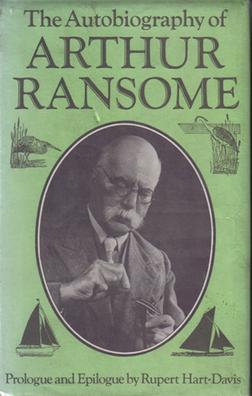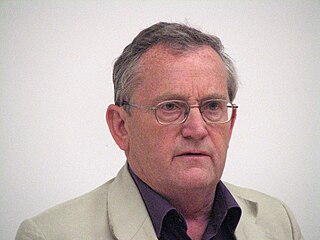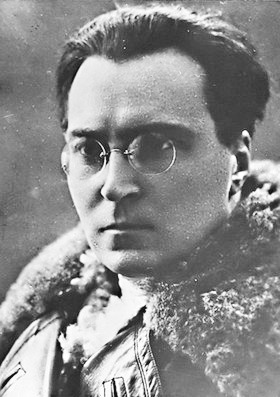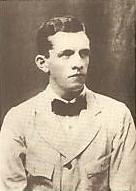
The Bolsheviks, led by Vladimir Lenin, were a far-left faction of the Marxist Russian Social Democratic Labour Party (RSDLP) which split with the Mensheviks at the Second Party Congress in 1903. The Bolshevik party seized power in Russia in the October Revolution of 1917, and was later renamed the Communist Party of the Soviet Union. Their ideology and practices, based on Leninist and later Marxist–Leninist principles, are known as Bolshevism.

Lev Davidovich Bronstein, better known as Leon Trotsky, was a Russian revolutionary, Soviet politician, and political theorist. He was a central figure in the 1905 Revolution, October Revolution, Russian Civil War, and establishment of the Soviet Union. Trotsky, with Vladimir Lenin, was widely considered one of the two most prominent Soviet figures and was de facto second-in-command during the early years of the Russian Soviet Republic. Ideologically a Marxist and a Leninist, his thought and writings inspired a school of Marxism known as Trotskyism.

The October Revolution, also known as the Great October Socialist Revolution, October coup, Bolshevik coup, or Bolshevik revolution, was a revolution in Russia led by the Bolshevik Party of Vladimir Lenin that was a key moment in the larger Russian Revolution of 1917–1923. It was the second revolutionary change of government in Russia in 1917. It took place through an armed insurrection in Petrograd on 7 November 1917 [O.S. 25 October]. It was the precipitating event of the Russian Civil War.

The Russian Revolution was a period of political and social change in the Russian Empire, starting in 1917. This period saw Russia abolish its monarchy and adopt a socialist form of government following two successive revolutions and a bloody civil war. The Russian Revolution can also be seen as the precursor for the other European revolutions that occurred during or in the aftermath of World War I, such as the German Revolution of 1918–1919.

Arthur Michell Ransome was an English author and journalist. He is best known for writing and illustrating the Swallows and Amazons series of children's books about the school-holiday adventures of children, mostly in the Lake District and the Norfolk Broads. The entire series remains in print, and Swallows and Amazons is the basis for a tourist industry around Windermere and Coniston Water, the two lakes Ransome adapted as his fictional North Country lake.

Jēkabs Peterss was a Latvian Communist revolutionary who played a part in the establishment of the Soviet Union. Together with Felix Dzerzhinsky, he was one of the founders and chiefs of the Cheka, the secret police of the Soviet Russia. He was the Deputy Chairman of the Cheka from 1918 and briefly the acting Chairman of the Cheka from 7 July to 22 August 1918.

Yakov Mikhailovich Sverdlov was a Russian revolutionary and Soviet politician who served as Chairman of the Secretariat of the Russian Communist Party (Bolsheviks) from 1918 until his death in 1919, and as Chairman of the All-Russian Central Executive Committee from 1917 until his death.

The Red Terror was a campaign of political repression and executions in Soviet Russia carried out by the Bolsheviks, chiefly through the Cheka, the Bolshevik secret police. It officially started in early September 1918 and lasted until 1922. Arising after assassination attempts on Vladimir Lenin along with the successful assassinations of Petrograd Cheka leader Moisei Uritsky and party editor V. Volodarsky in alleged retaliation for Bolshevik mass repressions, the Red Terror was modeled on the Reign of Terror of the French Revolution, and sought to eliminate political dissent, opposition, and any other threat to Bolshevik power.

Robert John Service is a post-revisionist British historian, academic, and author who has written extensively on the history of the Soviet Union, particularly the era from the October Revolution to Stalin's death. He was until 2013 a professor of Russian history at the University of Oxford, a Fellow of St Antony's College, Oxford, and a senior Fellow at Stanford University's Hoover Institution. He is best known for his biographies of Vladimir Lenin, Joseph Stalin, and Leon Trotsky. He has been a fellow of the British Academy since 1998.

Jānis Rudzutaks was a Latvian Bolshevik revolutionary and a Soviet politician. He was executed during the Great Purge.

Victor Serge, born Victor Lvovich Kibalchich, was a Russian writer, poet, Marxist revolutionary and historian. Originally an anarchist, he joined the Bolsheviks five months after arriving in Petrograd in January 1919 and later worked for the Comintern as a journalist, editor and translator. He was critical of the Stalinist regime and remained a revolutionary Marxist until his death. He was a close supporter of the Left Opposition and associate of Leon Trotsky.According to, William Giraldi, Serge's novels may be "read like an alloy of" George Orwell and Franz Kafka: "the uncommon political acuity of Orwell and the absurdist comedy of Kafka, a comedy with the damning squint of satire, except the satire is real." In his studies of Serge, Richard Greeman described him as a Modernist writer influenced by James Joyce, Andrei Bely and Freud; Greenman also believed that Serge, although writing in French, continued the experiments of such Russian Soviet writers as Isaac Babel, Osip Mandelstam and Boris Pilnyak and poets Vladimir Mayakovsky and Sergei Yesenin. He is remembered as the author of novels and other prose works, memoirs and poetry. Among his novels chronicling the lives of Soviet people and revolutionaries and of the first half of the 20th century, the best-known is The Case of Comrade Tulayev. Nicholas Lezard calls the novel " of the great 20th-century Russian novels" that follows the traditions of "Gogolian absurdity".

Sir Robert Hamilton Bruce Lockhart, KCMG was a British diplomat, journalist, author, and secret agent. His 1932 book Memoirs of a British Agent became an international bestseller by telling of his experiences in Russia in 1918 following the Bolshevik Revolution. He left the country after he was accused of having led a failed plot to assassinate Vladimir Lenin, the so-called Ambassadors' plot, a charge which he always denied. Later research suggests that the "Lockhart Plot" was a sting operation orchestrated by Felix Dzerzhinsky with the goal of discrediting the British and French governments.
Marcus Sedgwick was a British writer and illustrator. He authored several young adult and children's books and picture books, a work of nonfiction and several novels for adults, and illustrated a collection of myths and a book of folk tales for adults. According to School Library Journal his "most acclaimed titles" were those for young adults.

Viktor Pavlovich Nogin was a Russian Bolshevik revolutionary, Soviet politician and statesman in Moscow, holding many high positions in the party and in government, including Chairman of the Moscow Military Revolutionary Committee and Chairman of the Presidium of the Executive Committee of Moscow Council of Workers' Deputies. He was a member of first Council of People's Commissars, i.e., the first Government of Soviet Russia, as People's Commissar for Commerce and Industry.

There are a number of reports about the involvement of Chinese detachments in the Russian Revolution and Russian Civil War. Chinese served as bodyguards of Bolshevik functionaries, served in the Cheka, and even formed complete regiments of the Red Army. It has been estimated that there were tens of thousands of Chinese troops in the Red Army, and they were among the few groups of foreigners fighting for the Red Army.
Joseph Stalin was the General Secretary of the Communist Party of the Soviet Union's Central Committee from 1922 until his death in 1953. In the years following Lenin's death in 1924, he rose to become the leader of the Soviet Union.

Alexander Aleksandrovich Bogdanov, born Alexander Malinovsky, was a Russian and later Soviet physician, philosopher, science fiction writer and Bolshevik revolutionary. He was a polymath who pioneered blood transfusion and general systems theory and made important contributions to cybernetics.

Alexei Ivanovich Rykov was a Russian Bolshevik revolutionary and a Soviet politician and statesman, most prominent as premier of Russia and the Soviet Union from 1924 to 1929 and 1924 to 1930 respectively. He was one of the accused in Joseph Stalin's show trials during the Great Purge.
Racundra's First Cruise is the first book about sailing written by Arthur Ransome, author of the Swallows and Amazons series. It describes a trip he made across the Baltic Sea from Riga in Latvia to Helsinki in Finland and back in a 9 metre sailing boat that he had built.
Socialism in one country is a theory developed by Joseph Stalin to strengthen socialism within the country rather than socialism globally. Given the defeats of the 1917–1923 European communist revolutions, Stalin encouraged the theory of the possibility of constructing socialism in the Soviet Union. The theory was eventually adopted as Soviet state policy.
















